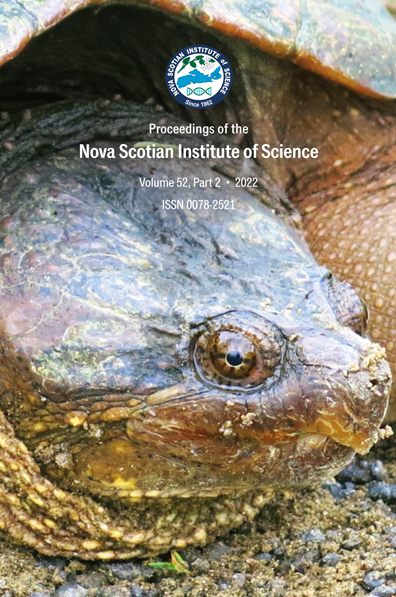Twenty years of ecological research in Nova Scotia wilderness areas and nature reserves: A review of studies, 2002 to 2022
DOI:
https://doi.org/10.15273/pnsis.v52i2.11497Abstract
The following paper is a review of the research undertaken over the last twenty years in Wilderness Areas and Nature Reserves in Nova Scotia.
A brief summary is presented of the main findings of each research project conducted by the author or contributed to by the author in a significant way. Inventories have included eleven bioblitzes and over four thousand plots from systematic transects. These have revealed significant new records for species including those of conservation concern. Results suggest there are many species than have not been identified in protected areas. Geographical Information System (GIS) Ecological Land Classification was completed for Nova Scotia and this led to ecosystem gap analysis to determine ecosystems that are not well represented in the current protected areas system. Long-term monitoring, using biodiversity transects and lichens, indicates that air quality is good throughout the protected areas system. Forests are returning to a more climax condition and with the exception of a few instances, non-native plants are generally not problematic. Carbon modeling of protected areas suggests that they will be a carbon sink for the next one hundred years and would be a carbon source if managed for forestry. Protected areas are well suited to provide ideal optimal settings in which climate change adaptation and mitigation can take place. Planning for climate change within protected areas can be facilitated by a Climate Change Adaptation Framework.
Research on species of special concern in protected areas has included turtles, Mainland Moose, Canada Lynx, America Marten, Lichens, Atlantic Coastal Plain Flora, forest plants and Piping Plover. Research on rare, sensitive, vulnerable ecosystems has involved predictive modeling and identification and characterization of heathlands, forest wetlands and Jack pine woodlands. Old Growth Forest research has included predictive modeling, biological inventories, dendrochronology studies and scoring using indicators. Human activities adjacent to protected areas can cause deleterious edge effects. An ongoing study in the Cloud Lake Wilderness Area is measuring the effect of adjacent forestry on birds and plants within the Wilderness Area. Several studies on connectivity have looked at the increase in connectivity caused by the establishment of protected areas in Nova Scotia. Other efforts on connectivity have identified key nodes of connectivity within the province which require protection. Human use of protected areas can lead to damage of ecosystems and so investigations on human use of protected areas has been focussed on motorized vehicles and to a lesser extent on human foot traffic. Although there have been many ecological studies in protected areas over the last twenty years, it is evident that there still is a great deal that is unknown about the biodiversity of protected areas.


